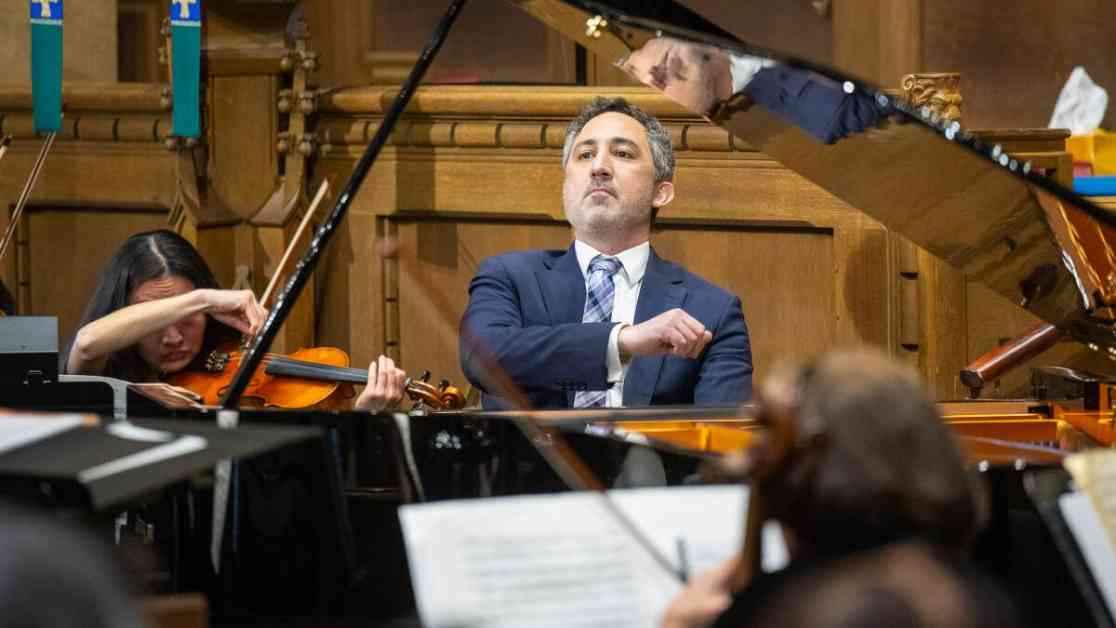When Denisa Hanna received the alarming images of the Palisades fire encroaching from the highlands, she knew she had to make a difficult decision. As the president of the Palisades Symphony Orchestra, she had to cancel their rehearsal scheduled at Palisades Lutheran Church. The safety of the community and its members was paramount, even though she was safe at her home in Mid-City. The orchestra, consisting of 70 dedicated members, was gearing up for their first practice of the new year, hoping to continue their tradition of providing musical programs for the community. The orchestra, which had evolved from a small adult education class at a local high school, had become a cherished institution over almost six decades of hard work and dedication from founders Joel Lish and Eva Holberg. Despite the loss of both founders in recent years, the symphony had persevered, bringing joy and music to the community.
In the wake of the devastating fire, members of the orchestra faced unimaginable losses. Helen Bendix, a first violinist, had to make a split-second decision to save her violins and violas, which held sentimental value as they were a link to her late mother. Similarly, Ingemar Hulthage, a long-time member, had to evacuate with his partner and cats, leaving behind his violin. The loss was not just material but emotional, as these instruments held memories and connections to their past. With homes destroyed and lives upended, the musicians were left grappling with the aftermath of the tragedy, trying to find stability and a sense of normalcy in the chaos.
As the orchestra members began to reconnect and assess the situation, Maxim Kuzin, the musical director and conductor, faced the daunting task of deciding whether to resume rehearsals. Having experienced his own share of displacement and loss in the past, Kuzin recognized the healing power of music. Drawing inspiration from the musicians who continued to perform during the siege of Sarajevo, he decided to lead the orchestra back to rehearsals, aiming to find solace and strength through music. The decision to resume rehearsals was met with a mix of relief and apprehension from the members, who were eager to come together and make music once again.
The road to recovery was not easy, with members like Helen Bendix and Ingemar Hulthage navigating the challenges of rebuilding their lives while preparing for an upcoming concert. The generosity and support within the orchestra community shone through, as fellow musicians offered help and resources to those in need. Denisa Hanna, a luthier skilled in repairing stringed instruments, provided Hulthage with a violin, restoring a sense of normalcy and hope in the midst of chaos. The orchestra members rallied together, determined to move forward and share their music with the community once more.
On the day of the concert, the atmosphere was charged with emotion and anticipation. The Westwood United Methodist Church served as a temporary performance space, as the Lutheran church in Pacific Palisades required extensive cleaning and restoration. The orchestra members, dressed in their concert attire, set up for the performance, with guest soloist Alexander Wasserman adding his talent to the program. As the orchestra played pieces by Lysenko, Grieg, and Franck, the music resonated with the audience, conveying a range of emotions from somber reflection to hopeful optimism. The concert was not just a performance but a testament to resilience and the power of music to heal and unite a community in times of adversity.
As the final notes faded away and the applause filled the sanctuary, the orchestra members, led by Maxim Kuzin, stood together, bowing to the audience. The concert was not just a musical event but a symbol of hope and renewal, a reminder that even in the face of tragedy, the human spirit can endure and find solace in the beauty of music. The Palisades Symphony Orchestra had weathered a storm, both literal and metaphorical, and emerged stronger, united by their shared love for music and their unwavering commitment to each other.


